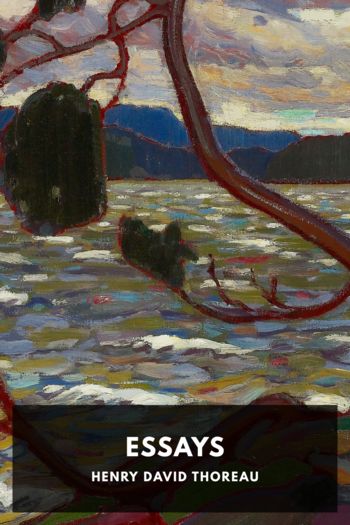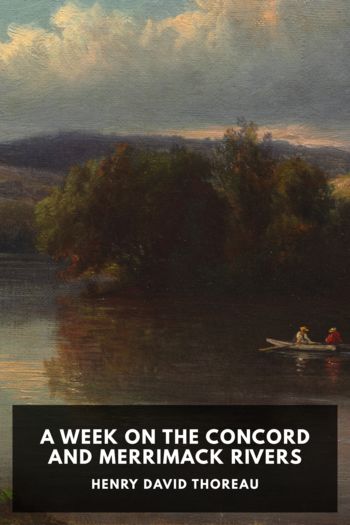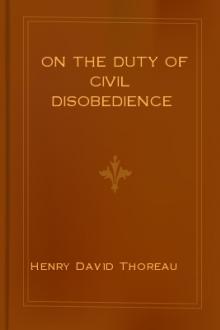Essays by Henry David Thoreau (feel good books .txt) 📕

Description
Though perhaps most famous for Walden, Henry David Thoreau was also a prolific essayist. Many of his essays touch on subjects similar to his famous book: long walks through nature, things found in moonlight that are invisible and unheard during the day, his preference for wild apples over domestic ones. In many ways he prefigured environmentalism, expressing his love for untouched nature and lamenting what the encroachment of man and cities were doing to it.
He also had strong opinions on many other subjects. One of his most famous essays, “On the Duty of Civil Disobedience,” was written as a result of his going to jail for refusing to pay several years’ worth of poll taxes. One of the primary reasons for his refusal was his holding the government in contempt for its support of slavery, and several of his other essays express support and admiration for John Brown, who thought to start a slave revolt when he attacked Harper’s Ferry in 1859.
Whether discussing trees in a forest, slavery, or the works of Thomas Carlyle, Thoreau’s essays are deeply personal and full of keen observations, often in poetic language. They give a sense of the man expressing them as being much more than the views being expressed.
Read free book «Essays by Henry David Thoreau (feel good books .txt) 📕» - read online or download for free at americanlibrarybooks.com
- Author: Henry David Thoreau
Read book online «Essays by Henry David Thoreau (feel good books .txt) 📕». Author - Henry David Thoreau
On the 24th of September, in 1857, as I was paddling down the Assabet, in this town, I saw a red squirrel run along the bank under some herbage, with something large in its mouth. It stopped near the foot of a hemlock, within a couple of rods of me, and, hastily pawing a hole with its forefeet, dropped its booty into it, covered it up, and retreated part way up the trunk of the tree. As I approached the shore to examine the deposit, the squirrel, descending part way, betrayed no little anxiety about its treasure, and made two or three motions to recover it before it finally retreated. Digging there, I found two green pignuts joined together, with the thick husks on, buried about an inch and a half under the reddish soil of decayed hemlock leaves—just the right depth to plant it. In short, this squirrel was then engaged in accomplishing two objects, to wit, laying up a store of winter food for itself, and planting a hickory wood for all creation. If the squirrel was killed, or neglected its deposit, a hickory would spring up. The nearest hickory tree was twenty rods distant. These nuts were there still just fourteen days later, but were gone when I looked again, November 21, or six weeks later still.
I have since examined more carefully several dense woods, which are said to be, and are apparently exclusively pine, and always with the same result. For instance, I walked the same day to a small, but very dense and handsome white-pine grove, about fifteen rods square, in the east part of this town. The trees are large for Concord, being from ten to twenty inches in diameter, and as exclusively pine as any wood that I know. Indeed, I selected this wood because I thought it the least likely to contain anything else. It stands on an open plain or pasture, except that it adjoins another small pine wood, which has a few little oaks in it, on the southeast side. On every other side, it was at least thirty rods from the nearest woods. Standing on the edge of this grove and looking through it, for it is quite level and free from underwood, for the most part bare, red-carpeted ground, you would have said that there was not a hard wood tree in it, young or old. But on looking carefully along over its floor I discovered, though it was not till my eye had got used to the search, that, alternating with thin ferns, and small blueberry bushes, there was, not merely here and there, but as often as every five feet and with a degree of regularity, a little oak, from three to twelve inches high, and in one place I found a green acorn dropped by the base of a pine.
I confess, I was surprised to find my theory so perfectly proved in this case. One of the principal agents in this planting, the red squirrels, were all the while curiously inspecting me, while I was inspecting their plantation. Some of the little oaks had been browsed by cows, which resorted to this wood for shade.
After seven or eight years, the hard woods evidently find such a locality unfavorable to their growth, the pines being allowed to stand. As an evidence of this, I observed a diseased red-maple twenty-five feet long, which had been recently prostrated, though it was still covered with green leaves, the only maple in any position in the wood.
But although these oaks almost invariably die if the pines are not cut down, it is probable that they do better for a few years under their shelter than they would anywhere else.
The very extensive and thorough experiments of the English have at length led them to adopt a method of raising oaks almost precisely like this, which somewhat earlier had been adopted by nature and her squirrels here; they have simply rediscovered the value of pines as nurses for oaks. The English experimenters seem early and generally to have found out the importance of using trees of some kind as nurse-plants for the young oaks. I quote from Loudon what he describes as “the ultimatum on the subject of planting and sheltering oaks”—“an abstract of the practice adopted by the government officers in the national forests” of England, prepared by Alexander Milne.
At first some oaks had been planted by themselves, and others mixed with Scotch pines:
“But in all cases,” says Mr. Milne, “where oaks were planted actually among the pines, and surrounded by them, [though the soil might be inferior], the oaks were found to be much the best.” “For several years past, the plan pursued has been to plant the inclosures with Scotch pines only, [a tree very similar to our pitch-pine], and when the pines have got to the height of five or six feet, then to put in good strong oak plants of about four or five years’ growth among the pines—not cutting away any pines at first, unless they happen to be so strong and thick as to overshadow the oaks. In about two years, it becomes necessary to shred the branches of the pines, to give light and air to the oaks, and in about two or three more years to begin gradually to remove the pines altogether, taking out a certain number each year, so that, at the end of twenty or twenty-five years, not a single Scotch pine shall be left; although, for the first ten or twelve years, the plantation may have appeared to contain nothing else but pine. The advantage of this mode of planting has been found to be that the pines dry and ameliorate the soil, destroying the coarse grass and brambles which frequently choke and injure oaks; and that no mending over is necessary, as scarcely an oak





Comments (0)